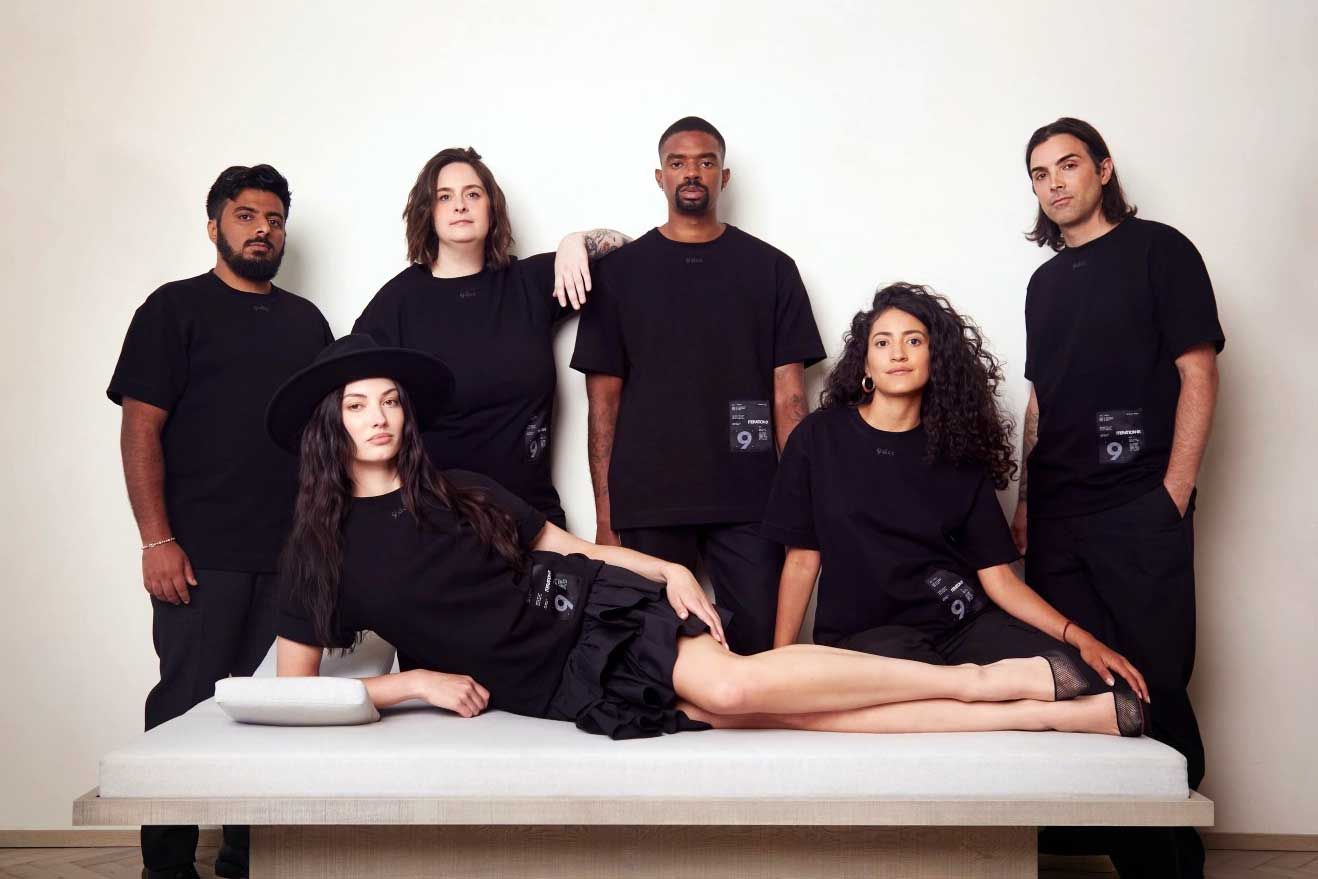
“Let’s say a pair of Jordans are sitting in your closet. The only way you can access capital without selling them to somebody is to go to your local pawn shop, which is going to give you an insane loanshark rate.” gmoney is explaining in a Zoom call. ”By creating 24-hour liquidity with NFTs, a Jordan expert living in Southeast Asia can agree to a loan.”
He’s describing the potential of the asset lending program built into 9dcc, his web3-savvy brand that began with a T-shirt drop.
To put it into practice, gmoney partnered with Anthony Trotta of Vernon Capital, giving holders of 9dcc’s Iteration-001 drop the opportunity to put their T-shirt and/or NFT up as for a collateral loan of $125 with 20% APY.
It’s not a ton of cash even compared to the NFT’s original mint price of about $500 but, for gmoney, it’s demonstrating new financial opportunities for physically backed tokens (PBTs).
“When you look at the sneaker market, people generally buy one to wear, one to flip,” he said, “So, there’s a lot of deadstock just sitting in closets not being touched. That’s money the owner can’t tap into until they sell them.”
We are very excited to announce details on the physical garment delivery for 9dcc ITERATION-01. On October 20 at 5 PM EST a snapshot and airdrop will take place for holders of the 9dcc looks NFT. The looks NFT will no longer be eligible for the physical garment post airdrop pic.twitter.com/UTnOT4D3PQ
— 9dcc (@9dccxyz) October 14, 2022
StockX’s Vault NFTs have explored similar terrain but gmoney’s 9dcc project has two major selling points that set it apart.
Firstly, all assets start on the blockchain, so they’re verifiably authentic (an issue currently plaguing resale sites like StockX and Grailed).
Secondly, owners can access cash loans without having to flirt with selling their items. When considering items that sell for $200 but can get anywhere from $2,000-$10,000 on the secondary market, being able to loan even $500-$1,000 on that could make a dent in someone’s cash flow.
“This is exactly what you see most mature financial markets do,” said gmoney, who had a career in finance before making the leap to web3. “Whether it’s equities or real estate bonds, people use semi-fungible instruments for collateral and get loans against them.”
“One of the beautiful things about web3 is being able to own that instrument and use these tools that were once only available to the richest people on the planet.”
gmoney believes that giving the entire resale market access to asset lending could be huge.
“If you want to talk about onboarding more people from fashion into web3, this is a really compelling argument.”
As brands like Nike and Louis Vuitton continue to build their own web3 offerings, gmoney hopes his collateral lending will help them capture and expand revenue sources from products they’re already selling. For example, if Nike wanted to launch its own online resale market, it could offer collateral loans to preferred resellers to help them increase their cashflow, increasing the likelihood they’ll spend that money with Nike.
It won’t happen overnight but what gmoney and 9dcc are offering now could become common practice for high-ticket items in the next few years.

